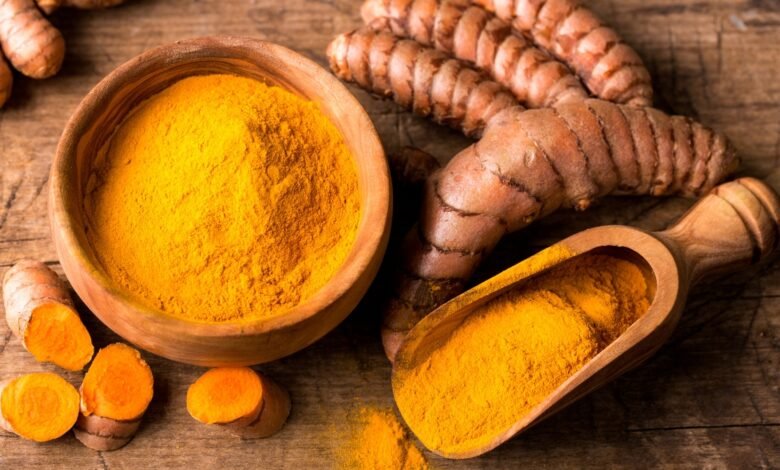Why our ‘Haldi’ may not be ‘healthy’?
Researchers have discovered the unhealthy presence of lead chromate in turmeric powder. 'Haldi,' an integral part of Indian cuisine and culture, has now been labelled as a 'slow poison.'

Given the popularity of turmeric in Indian culture and cuisine, the powdered stem of the plant has always been considered a superfood and antioxidant. Renowned for its anti-inflammatory and immunity-boosting properties, elderlies of many Indian households preach the benefits of ‘Haldi-doodh’ and ‘Haldi paste.’ The popularity of turmeric powder is not limited only to the aged, as its vibrant photogenic colour has made it an obvious choice for young people to enhance their Instagram feeds and stories.
Who could have speculated that the ‘superfood’ present in every Indian kitchen, omnipresent in every auspicious Hindu ritual and ceremony — would emerge as a ‘slow poison’?
Recently, a report published by the Economist illustrated how adulteration of spices has become a common practice in India. In their report, they singled out the use of ‘Lead Chromate’ as a colour-enhancing agent by manufacturers of turmeric powder. Lead chromate is rendered as a hazardous substance that can impact brain development in kids and has been linked with the occurrence of numerous heart and brain diseases.
Experts believe that a high level of lead consumption can lead to a ‘significant gap in a child’s learning ability.’ Today, the desi haldi powder has become one of the largest sources of ‘lead poisoning’ along with paint and petrol.
Pan-India adulteration of spices:
In 2018, a US-based environmental health non-profit organisation discovered high levels of lead contamination in blood samples of a community in Bihar. Initially, the organisation deduced a nearby battery recycling factory as the cause of contamination.
However, when the level of lead contamination refused to wane despite relocating the factory, the workers from the organisation decided to survey their households (of the community). After surveying their kitchen and cooking utensils, the surveyors discovered high lead content in the spices used for cooking, especially turmeric.
Larger surveys were carried out across eight districts in Bihar between December 2022 and March 2023, revealing that half of the collected spice samples had very high lead content. In addition to turmeric — coriander, chilli, and mixed curry powders had lead content exceeding the FSSAI (Food Safety and Standards Authority of India) limit. Of the sampled spices, turmeric had the highest lead content at 4139 ppm — four hundred times higher than FSSAI’s standardised limit!
The problem of spice adulteration is not limited only to Bihar. Recent raids and seizures by health authorities across India have identified it as a ‘pan-India’ problem. Lately, Delhi police raided two spice factories and seized 25 tonnes of adulterated spice. In May 2023, the Gujarat police confiscated 64 tonnes of impure spices, where the owners dumped harmful substances like paper pulp, industrial starch, and synthetic dyes.
In Delhi’s Khari Baoli spice market (Asia’s largest spice market), many vendors revealed that since customers prefer brighter-coloured spices, it was a ‘common practice’ for them to add impurities to make their products shine. Consumers in India often harbour a misconception that ‘brighter the colour of the spice, the better it is.’ Such misconceptions highlight the lack of awareness among Indian consumers.
Spreading awareness:
The NITI Aayong and the CSIR (Council of Scientific and Industrial Research) collaborated in a survey to discover that the average level of lead contamination in the blood of Indian people exceeded five micrograms per decilitre — which is unsafe and might demand medical intervention.
One of the prime reasons for such a predicament is the lack of awareness and available data. The machine used for detecting lead contamination in spices, the ‘XRF Analyser,’ is fairly expensive (each cost around Rs. 25 lakhs), and food inspectors cannot work efficiently unless the government subsidised such machines and made them readily available to ensure public safety.
Our neighbouring country, Bangladesh, pioneered this domain by eliminating the widespread problem of spice adulteration in just two years! India should also follow Bangladesh’s precept and adopt a ‘state-wise plan’ to communicate with customers and sellers about the consequences of spice adulteration.
Today, India is a leading producer and exporter of spices. Our export of spices has doubled in the last nine years, and our spice market gets evaluated at Rs. 3995 crores (according to the Ministry of Commerce). It is imperative that the standard of goods produced in India remained high and elements of mass consumption (like spices) were safe for all.
Here is a test to check whether the turmeric powder in your kitchen has impurities. Add turmeric powder to a glass of water and observe:
- If the powder gradually settles down at the bottom of the glass and the colour of water remains unchanged — the turmeric is pure.
- If the powder changes the colour of the water and does not sediment — the turmeric is adulterated.
Stay aware and stay safe.


